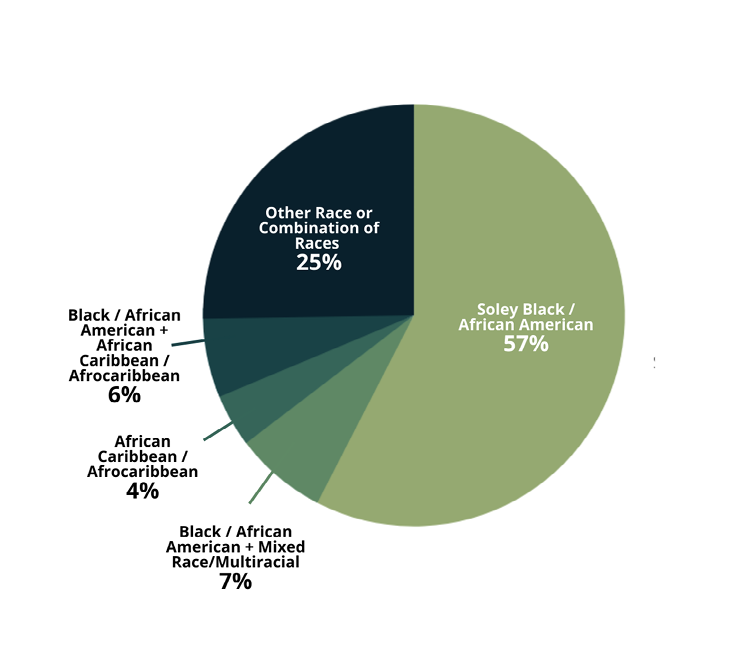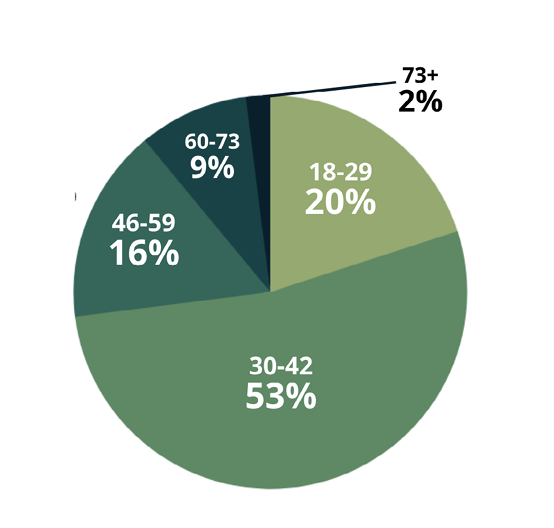By: Melissa Parke & André Solomon
In our last blog, we wrote about the process that the teams at Black Teaching Artists Lab (BTAL) and Creative Generation collaborated on to conduct an evaluation and compilation of research by, for, and about Black teaching artists. We also outlined the initial findings and the framing of our questions for exploration. Now, after almost a year of inquiry, we are pleased to share what we learned.
Unsurprisingly, there were very few scholarly articles, reports, or peer-reviewed documentation with this niche focus. So, upon archiving these specific studies, we broadened our scope to explore materials (what we referred to broadly as “documented knowledge”), which related to teaching artists and Black arts-based teaching and learning.
After our first stage of research, BTAL authored a Scope of Work, which outlines the approach to identifying the gaps mentioned before and names the three areas, which we explored through field research. Check out the scope of work here. Here are the three areas of inquiry:
The Importance of Community
The Cultivation of Black-Centered Spaces
The U.S. Education System's Discrimination
What We Asked
Based on the first phase of work, we crafted our research question: What are the current attitudes and perceptions of Black-identifying teaching artists about their work in the United States?
The survey instrument was created in response to the identified gaps from the documented knowledge. It intended to capture self-reported data related to:
The demographics of respondents;
The role of Black identity and culture in teaching artistry;
The experience of Black-identifying teaching artists working in the U.S. education, cultural and nonprofit sectors; and
Support for Black-identifying teaching artists.
What We Found
From a survey of 115 participants, our research uncovered several statistics and findings about Black teaching artists through their demographics and experiences in the field, specifically revealing needs ranging from increased benefits and access to readily available educational resources to effectively teach their Black and Brown students. These findings reveal a lack of support to develop both the Black teaching artist and relevant curricula.
Read the full report here. Below, please find a few quick summaries and infographics about the data.
The Importance of Community
One of our main objectives with this ethnographic research initiative was to elevate not only the lived experience of Black teaching artists, but also who they are as Black individuals. To our knowledge, there has not been any other study that has looked at this specific demographic and their enduring struggles.
From our research on the published literature by, for, and about Black teaching artists, we uncovered a dearth of understanding about the intersectional demographics of this unique field of practice in the United States. Considering what little data has been collected about U.S.-based Black-identifying teaching artists historically, the below may serve as an initial snapshot into this self-identified community of practice within the broader field.
Even though an overwhelming majority (83%) of respondents felt their Black identity was very important to them, regardless of the context of their work as teaching artists. Many Black teaching artists experience feelings of discrimination and a sense of discomfort in the various contexts within which they work. These individuals struggle with expressing their unique interests, especially if those interests challenge commonly held stereotypes, like the delineation between identity, culture, and artwork produced.
As one Black teaching artist said,
“I work on a majority black staff for a non-profit whose current funding model is tied to white donors, white funders, and white foundations who require way too much work and jumping through hoops for inadequate, inequitable, and unsustainable funding. Our staff is exhausted and worn thin because of funders expectations, causing continuous attrition. Instead of focusing on programs that we know work, we are always forced to innovate and keep going even during a pandemic. Additionally many funders have no idea the work that goes into programming and this is a huge problem. They prefer to fund programming directly, but won't fund payment the staff who ensure that programming continues”
Cultivation of Black-Centered Spaces
The need for Black curriculum is equally as valuable and needed as a Black educator. Providing Black learners with historical content that centers the Black voice, history and tradition allows them to digest knowledge knowing their whole selves were taken into consideration.
There is an immediate need in our country to facilitate equitable learning experiences for the Black learners as they have long-since been left out of Eurocentric curricula and colonized ideologies of success. Arts practices can equip Black learners with powerful outlets for self-expression, and it is through these practices that Black learners can further investigate how they are perceived by others and who they actually are as whole individuals. By using our arts practices to meet Black learners where they are, in terms of their own personal development journey, we can work to help them build both their Black identities and their own, whole-self identities. It is through this process, that we can ultimately equip Black learners to have a better understanding of how the Diasporic community has been treated throughout history and guide them forward on the path to discovering revolutionary ways of shaping our future.
Though there are tremendous benefits regarding Black teaching representation, we must be aware of institutional flaws and disproportionate responsibilities for the well-being of Black students placed on Black teaching artists. Often, there is an unspoken commitment to the advancement of the Black community from Black-identifying individuals where many take on the charge. However, with the current system intentionally setting Black and Brown children behind the curve, it is a difficult task to take on where these individuals might be acting alone amongst the sea of White.
Discrimination within the U.S. Education and Cultural Systems
We cannot support our Black-identifying teaching artists without acknowledging the challenges that exist for educators in the U.S. Institutionalized racism is pervasive in the American education system, and everything from implicit bias to explicit discrimination can impact career trajectories.
Being in a profession where 86% of arts educators are white women (Will, 2022), Black teaching artists find themselves in spaces where they must not only navigate their race but constantly prove themselves. Discussions about race and institutional racism have become increasingly more difficult to have in recent years, leaving Black educators to feel displaced and traumatized. If Black educators are feeling this way, what are our Black students feeling?
Despite a large portion of the responding Black teaching artists having a 4-year degree or higher or having completed specialized training in their field, nearly 75% of the teaching artists do not receive any type of benefits from their place of employment. Additionally, 45% of teaching artists are contracted workers; only 14% are full time, salaried employees with benefits.
What Can We Do Now?
We believe in the power of community-building and connecting, both in the United States and abroad, in order to foster a better understanding of the Black experience through arts and culture. As previously mentioned, these efforts evoke Pan-Africanism. Here solidarity, through means of arts and culture, has the potential to uplift Black learners and engage all people of the African Diaspora on a path towards intellectual, social, emotional, political, and economic inclusion and growth. By building inclusive, strong, and multicultural learning communities, we believe that Black learners will be able to develop a deeper sense of ourselves. Despite the institutional racism that pervades America’s education system and the ongoing fatigue and frustration the nation’s Black and Brown educators face, their responses to this study acknowledges the interests and desire for support.
This work has confirmed the value of community-building, the importance of acknowledging institutional barriers, and increasing access to benefits within the U.S. education system for Black and Brown teaching artists.
Therefore, we encourage all organizations who employ Black-identifying teaching artists to invest more deeply in anti-racist practices, culture awareness, empathy, and sustainable compensation. These focus areas are complimented with an array of solutions, check out the full report here for some starting points.
Where Do We Go From Here?
BTAL and Creative Generation hope that this report serves as a foundational point for those who have an interest in furthering the voices of Black teaching artists around the world.
In order to address the gaps in research and knowledge on Black teaching artists, BTAL would like to continue compiling resources for, and by America’s Black teaching artists, and what they need and want from the organizations, schools, and institutions which employ them.
From here, BTAL is committed to providing Black teaching artists in the U.S. with a pedagogical framework for Afrocentric Social-Emotional Learning and ultimately, analyze and evaluate the effectiveness of this framework in meeting the needs of these teaching artists.
To best support Black teaching artists in the field, we suggest that individuals or organizations consider supporting Black teaching in the following structural ways:
Provide additional medical and dental benefits for contracted workers
Invest in healing spaces such as racial affinity spaces, therapy and counselors for Black teaching artists in your spaces
Encourage conversations that about diversity, culture and race in your work culture
Give your Black-idenifyig teaching artists the opportunity to share their own stories through lesson planning and curriculum design
To contribute or explore the work of BTAL more, please visit www.BlackTeachingArtistsLab.org
-
Parke, M., Solomon, A. (2022, September 13). A Missing Narrative: An Ethnographic Analysis of Black Teaching Artists. Creative Generation Blog. Creative Generation. Retrieved from https://www.creative-generation.org/blogs/a-missing-narrative-an-ethnographic-analysis-of-black-teaching-artists







